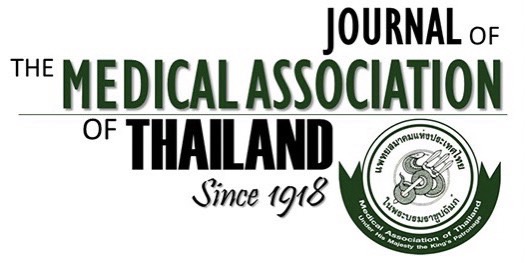Risk Factors Associated with Exacerbation Frequency in Chronic Obstructive Pulmonary Disease
Sirada Srirojanakul¹, Ekanut Nawamongkolwatana¹, Wisarn Kittiwijit¹, Wisit Kaewput²
Affiliation : ¹ Medical student, Department of Military and Community Medicine, Phramongkutklao College of Medicine, Bangkok, Thailand; ² Department of Military and Community Medicine, Phramongkutklao College of Medicine, Bangkok, Thailand
Background: By 2030, chronic obstructive pulmonary disease (COPD) will become the third leading cause of death globally according to the World Health Organization (WHO) prediction. COPD exacerbation, its flared symptoms causing economic and health burdens to the patients, especially those in lower-to-middle income countries, however, its aggravating factors are yet poorly clarified and under-acknowledged.
Objective: The present study aimed to detect patients at high risk of frequent exacerbations based on their individual risk factors, which may minimize cost and damage of the disease.
Materials and Methods: The study population was the 268 COPD-diagnosed patients coded with “J440” or “J441” of ICD10, with spirometry results, followed-up at the COPD clinic of Sanam Chai Khet Hospital in 2023, and visiting the clinic in January, 2023. The dependent variable was the number of acute exacerbations resulting in hospitalization in 2023, independence variables were gender, age, underlying diseases, baseline FEV1, BMI, smoking status, and forms of 1-year dust exposures. The associations among these variables were measured by multiple risk regression analysis.
Results: The incidences of infrequent and frequent exacerbations were 74.63% and 25.37%, respectively. After adjusting for the confounding factors, the factors, such as 30% to 49% of FEV1 (GOLD 3) (IRR 2.36, 95% CI 1.32 to 4.20), overweight and obesity (IRR 0.45, 95% CI 0.20 to 0.97), smoking status including both former (IRR 4.66, 95% CI: 1.45 to 14.94) and current smokers (including those who were less than 1-month ex-smoker) (IRR 6.88, 95% CI: 2.09 to 22.65), chronic exposure to organic (IRR 2.47, 95% CI 1.28 to 4.78), and coal dust (IRR 2.80, 95% CI 1.46 to 5.36) had shown significant associations with frequent exacerbations.
Conclusion: COPD exacerbation, a crisis in healthcare systems, flared up by multi-factors. Smoking, its most common cause, was strongly supported by the present study with significant associations in both current and ex-smokers. Baseline lung function and BMI are suggested to be considered for further investigations. Chronic exposure to dusts such as coal and organic dust, are preventable but under-acknowledged factor, especially in lower-to-middle income countries where agriculture and factory works are the main income of their rural populations.
Received 3 May 2024 | Revised 28 July 2024 | Accepted 8 August 2024
DOI: 10.35755/jmedassocthai.2024.9.701-707-889
Keywords : Chronic obstructive pulmonary disease (COPD); Chronic obstructive pulmonary disease exacerbation (COPD exacerbation); Risk factors; Frequent exacerbations
All Articles
Download



